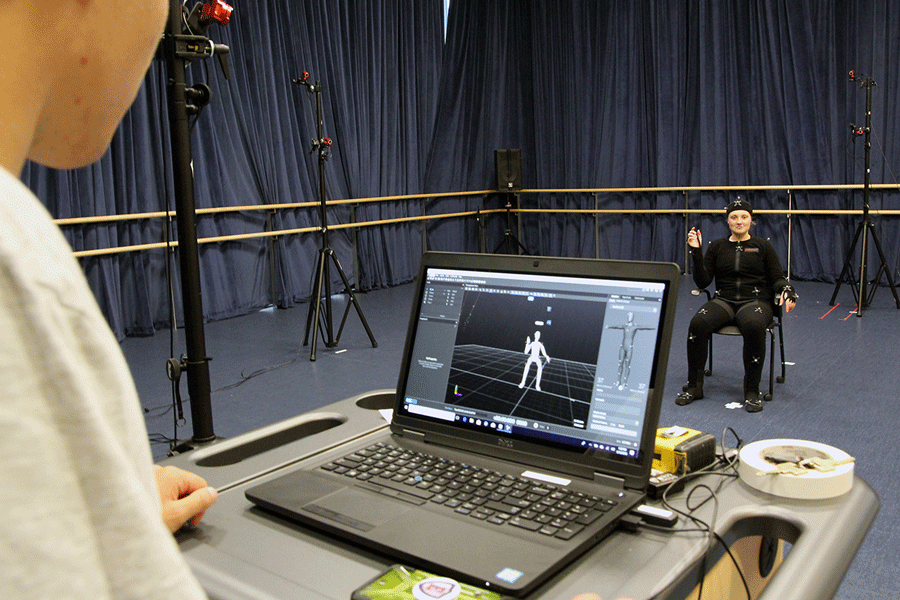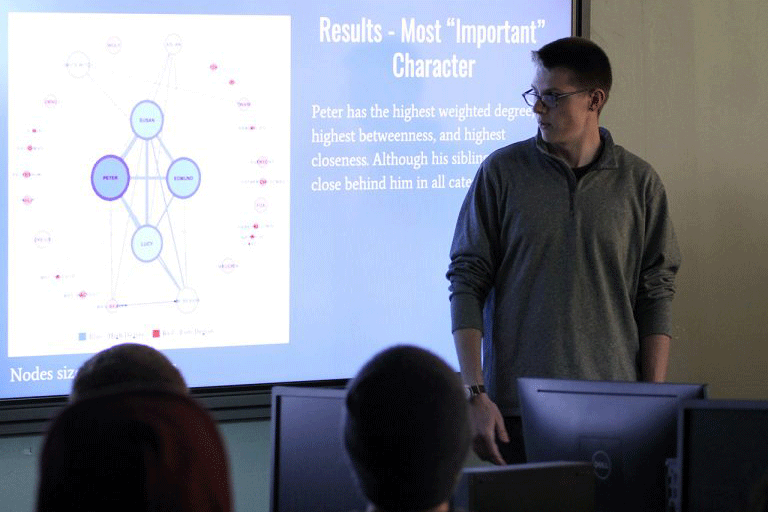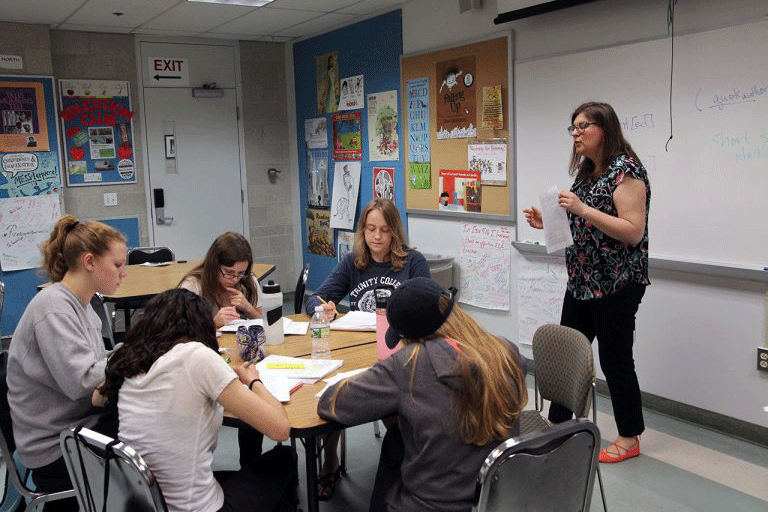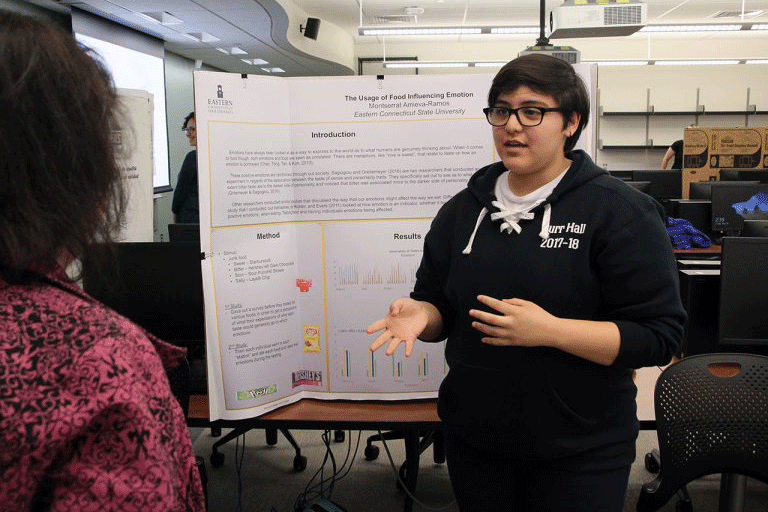- Apply
- Visit
- Request Info
- Give
Summer Research Institutes Expose Students to New Fields of Inquiry
Written by Michael Rouleau
Published on May 24, 2018

Eastern Connecticut State University held three inaugural Summer Research Institutes from May 14–18 to engage promising and high-achieving students in intensive, week long research programs pertaining to the fields of new media, network science and English. A fourth research institute for psychology occurred during the same time, although this has been an annual program.
The New Media Studies institute challenged seven students to develop a short film using motion-capture technology. The group made a three-minute noir-esque film that showed a 3D-rendered detective frog (the frog being a symbol of Willimantic) performing motion-captured actions such as drinking a martini, smoking a pipe and dancing.
Under the supervision of faculty members Kristen Morgan and Travis Houldcroft, as well as student mentor Zachary Parisella, students utilized a variety of motion capture equipment and animation software, including Motive, Blender, Adobe Premiere and After Effects, and Pro Tools for audio.
“In terms of the software, this project really forced me to utilize everything I know and consider solutions that I had never thought of before,” said Wasan Hayajneh ’19, who majors in new media studies and visual arts.
Students were also introduced to the fundamentals of animation post-production with an introduction to character visual design, voice-over recording, and the use of diegetic sound in an animated environment.

The network science institute challenged nine students to perform network analyses of character interactions in a movie to evaluate a hypothesis about the movie’s social structure. Broken into three groups, the students analyzed “The Matrix Trilogy,” “The Chronicles of Narnia” and Disney’s “Mulan.”
Under the supervision of professors Megan Heenehan (mathematics) and Garrett Dancik (computer science), and student mentor Haley Knox ’18, students found their movie’s script online, wrote code to extract information and analyze that script, then used the software Gephi to visualize their network analysis.
“Our initial hypothesis for ‘The Chronicles of Narnia’ was incorrect,” said Oliver Chase, who majors in New Media Studies. “At first we thought that Edmund was the most important character, due to his connection to both sides of Narnia. However, we discovered that Peter in fact had more interactions and scenes than any other character.”

The English research institute challenged 10 students to select a work of literature and then pair it with other works and sources to craft meaningful arguments. Under the mentorship of English Professor Allison Speicher and student mentor Jessica Maloney ’18, students used their pairings to devise research projects based on intertextual analyses.
English major Julia MacKinnon selected the novel “A Thousand Splendid Suns” by Khaled Hosseini, a story about the struggles of two women living in Afghanistan. She paired it with book reviews, other novels and historical texts.
“I researched people’s stereotypic views of Afghanistan and its refugees by looking at media depictions,” said MacKinnon. “I also researched the history of the country to get a better understanding of the wars and how the fighting affects civilian’s lives. Then I compared the novel to other works by Hosseini in order to understand his purpose for writing about Afghanistan. I also read critical readings about the text in order to learn what others concluded about the novel.”
Reflecting on the institute, Kaylee Blackwood ’20 said, “I realize now how deep the pursuit of research can be. You can take one topic, start simple, and fall so deep into research that you end up with 20-30 pages of knowledge and arguments to use to write an essay.”

For the psychology research institute, nine students were introduced to topics in sensation, perception and cognitive neuroscience. Students dissected cow eyeballs, explored taste by blocking perception of sweetness with the herb gymnema sylvestre, and explored visual processing by working with an eye-tracking device. They also learned how to search and review peer-reviewed literature, develop a research question and design an empirical study to answer that question. A poster presentation concluded their institute.
“My favorite part of this experience was learning to collect data from your own experiment and choosing the correct test to run the analysis,” said Genesis Ramon ’20, who researched how social media influences the eating behavior of women. “This has shown me the value of research and the hard work that goes into developing a research project.”
The institute was led by Psychology Professors Luis Cordón and Lyndsey Lanagan-Leitze, as well as student mentor Malvina Pietrzykowski ’18.
The Summer Research Institutes were born of the university’s mission to foster student success and retention through structured research and creative activity. The institutes were a product of Eastern’s Undergraduate Research & Creative Activity Council as well as the University Retention Committee.
To see all of the Summer Research Institute final projects, visit Eastern’s undergraduate research website.


